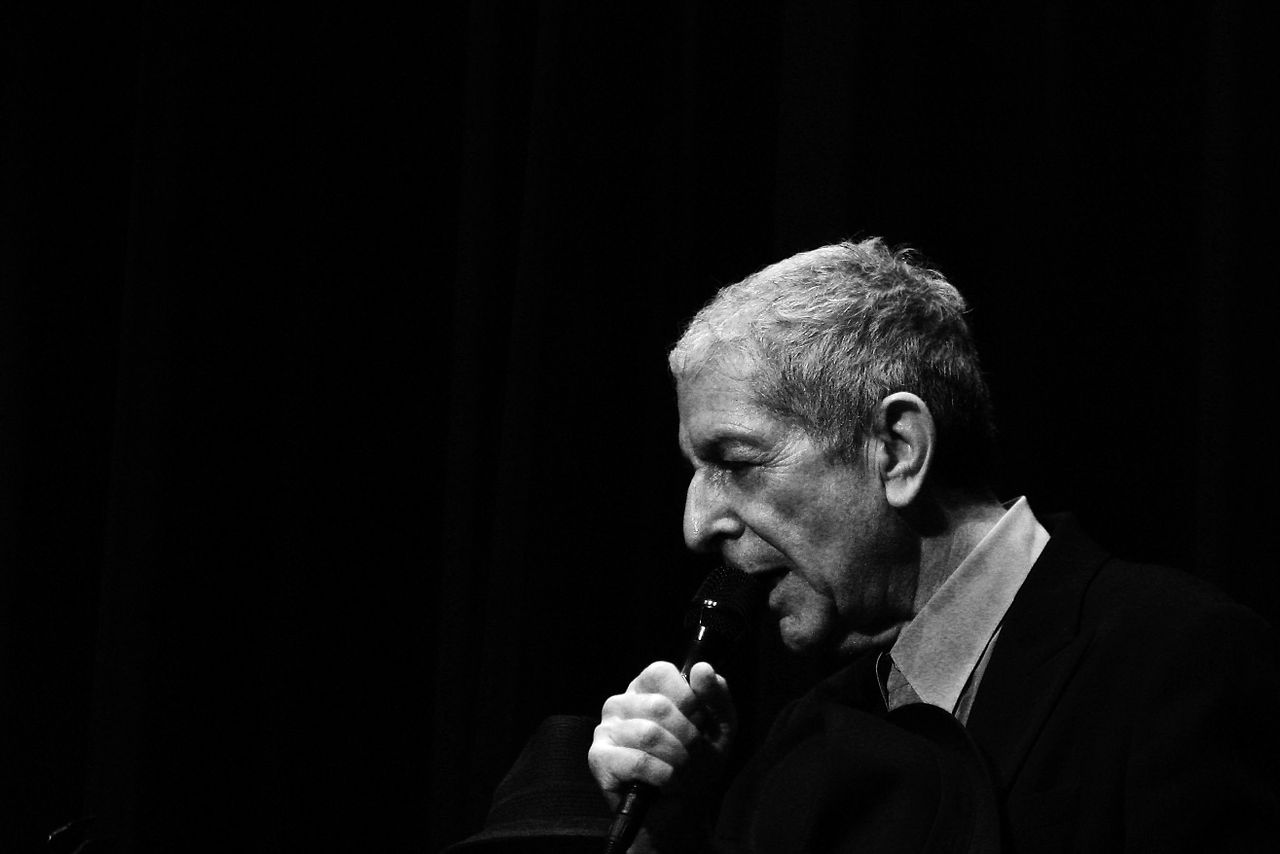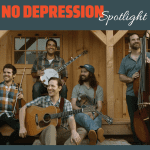EASY ED’S BROADSIDE: An Afternoon with Leonard Cohen

Photo by Rama, CC Attribution-Share Alike 2.0 France
He was neither Porter Wagoner nor Merle Haggard. There was no thread of connection with either The Byrds or The Beatles, nothing in common with Amon Düül or Harry Partch’s 43-tone scale. At the time I was more curious about smoke, potions, powders, girls, and Garcia than a poet from Canada. Close to the date I turned 19 I was handed a copy of Leonard Cohen’s Songs of Love and Hate by the editor of my college newspaper and instructed to write a review. I did not. Instead I submitted an article titled “The Only Dope Worth Shooting is Richard Nixon,” which resulted in surveillance by the FBI, a phone tap at my parents’ house, and possibly a manila file by now yellowed with age and tucked away in a dusty basement in Washington.
As long as I had Tim Hardin’s version of “Bird on a Wire,” recorded with an army of jazz musicians by a man with a velvet and smoky voice and unique phrasing who spent half his life as a heroin addict, I had no need for Leonard Cohen. He could keep writing his beautiful music, releasing albums that I ignored, and, if I truly needed a fix, there were the legion of interpreters to translate his work. Before I leave Mr. Hardin, here’s one thing of many things I did not know: He appeared at Woodstock but his performance was never captured in the film nor soundtrack, save for an acoustic version of “If I Was a Carpenter” that appeared in a 1994 box set that likely not many noticed or cared about.
In 1988, Cohen’s I’m Your Man disc landed on my desk and would have been thoughtlessly tossed or donated had I not been made aware that among the many session musicians was Sneaky Pete Kleinow of the Flying Burrito Brothers. That piqued my interest enough to listen, and for the next year I did so endlessly until I drifted away and moved on. I thought I had enough Cohen, stayed away from The Future, and forgot about him as he retreated to the Mt. Baldy Zen Center for a five-year period of seclusion, becoming ordained as a Rinza Zen Buddhist monk and serving as a personal assistant to Kyozan Joshu Sasaki Roshi.
Nineteen years passed and I was living in a valley between San Diego and Palm Springs with summer daytime temperatures in the low hundreds and cool early evening ocean breezes that whipped over the mountains and through the passes. My career in music had come to an end, half the homes in my neighborhood stood empty from foreclosure, my marriage was unravelling, and a puppy we named Shaky Lennon King reintroduced me to Mr. Cohen through our daily long walks as he sniffed and strutted while I pumped songs into my ears.
Live in London, Cohen’s 18th album and the first in 30 years that was recorded in concert, was released and became my daily elixir, soul fixer, and the aural medicine that I needed to cleanse away the mental debris, and it soothed me like no other album. In one of the first articles I posted for No Depression, I believe I wrote something to the effect that this double disc set would be the only thing I would need to take with me when the apocalypse commenced. I had made my way back to Leonard, thanks to a dog we called Lenny for short.
In November 2017, a year after Cohen’s death, an exhibition titled Leonard Cohen: A Crack In Everything opened at the Musée d’art contemporain de Montréal (MAC). This is how it was described in the museum’s program: “A multidisciplinary exhibition offers the public a collection of brand-new works commissioned from and created by local and international artists who were inspired by the great master’s style and recurring themes. These artists represent the visual arts, performance art, music, the written word and film, thus providing visitors with a dynamic, participative and immersive experience.”
A year later it was announced that the exhibition would be embarking on a worldwide tour, beginning at New York City’s Jewish Museum on April 9 of this year through September, followed by showings in Copenhagen and San Francisco. John Zeppetelli, one of the curators of the exhibition, has explained that MAC received Cohen’s personal approval and endorsement for the project.
“When we came up with the idea for this exhibition, we went to seek the agreement of Leonard Cohen, who accepted because of the angle we were proposing. It was important for him that this exhibit would not be of a biographical nature. From the start, the project was conceived as a contemporary artistic exploration of a life’s work, and in that sense, he was thrilled to be able to inspire other artists through his art. Given his recent death, our exhibition has taken on a new meaning. It has also become a tribute to a local icon and a global star.” (e-Flux)
A few months ago, when the exhibition opened here in New York City, an art critic for the Washington Post named Sebastian Smee wrote a review with the extremely long and lower-case title of “I wanted to love this Leonard Cohen exhibit, but was overwhelmed by gimmicks and kitsch.” My heart sank as I read that his experience at the museum left him feeling “squeezed dry of all but secondhand sentiments, my best thoughts hijacked at every turn by a pantomime of feeling, a parody of catharsis. Leonard Cohen was a poet. This is an attempt to collapse poetry into groupthink.” He also added this: “Let me reiterate: I love Leonard Cohen. But I wanted to puke.”
While I am not driven to action by reviews, and believe firmly that one person’s vanilla is another’s chocolate, this one was so strongly acidic that it gave me pause. I hesitated to attend until the stench of his words dissipated, allowing me to experience it on my own terms without prejudice. And this past week, on a most beautiful sunny day, I got to the museum around noon, sat across the street in Central Park while I ate my packed lunch and people watched (I am being poli-#metoo-correct; I mostly looked at women passing by in their summer clothes) paid my “old guy” discount and wandered through the dozen or so installations spread out over two and a half floors.
If you’re expecting from me some sort of rebuke to Mr. Smee’s review, I’ll pass. He has every right to express his opinion, with the only sadness being that many people might actually consider that his experience will be their experience. What I’ll tell you is that for three and a half hours I was immersed in music and visual imagery that touched me deeply and drained my body and soul from any anxiety and despair. It was as if I was existing in my own personal Cohen bubble, feeling only briefly annoyed at one particular woman who insisted on staring at her iPhone and occasionally taking photos of empty white walls. I let it pass. À chacun son.
On April 7, 2013, I attended what would be Cohen’s last concert in New York City at the midpoint of the Old Ideas World Tour, which was his last time out on the road. It was possibly the most musically rewarding night of my life. He did two sets of 22 songs followed by three more for the first encore, another three for the second, and at the third and final encore he performed “I Tried To Leave You.” He didn’t, and still hasn’t.
My afternoon with Leonard Cohen this week brought back the same warmth and wonderment of that night, for which I’m eternally grateful. On reflection, I am sad that his music came to me in fits and starts, and that it wasn’t until I was mature enough — likely a contested opinion — that my head, heart, and ears opened to him. I am a better person for it.
Many of my past columns, articles, and essays can be accessed at my own site, therealeasyed.com. I also aggregate news and videos on both Flipboard and Facebook as The Real Easy Ed: Americana and Roots Music Daily. My Twitter handle is @therealeasyed and my email address is easyed@therealeasyed.com.




